8.3.15 Cool-Ade
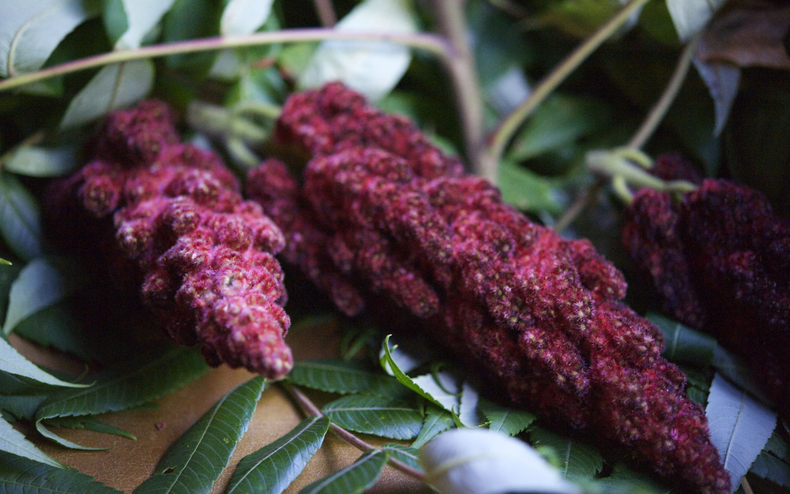
There's a very particular satisfaction to be had from eating wild things. The connection to nature, the bold (if largely misguided) sense of self-sufficiency and the discovery of new flavors all add up to a deeply enriching experience. If you've never ventured into the fields and forests in search of a delicious morsel—wild blackberries! fiddleheads! oyster mushrooms!—you're missing something very primal. Fear can hold us back, but stop for a moment to ponder that. We come from nature and it is only there that we are truly in our element. Let knowledge dispel ingorance and find your way back to the wilderness. I will lure you off the beaten path with a couple of easily identified wild treats.
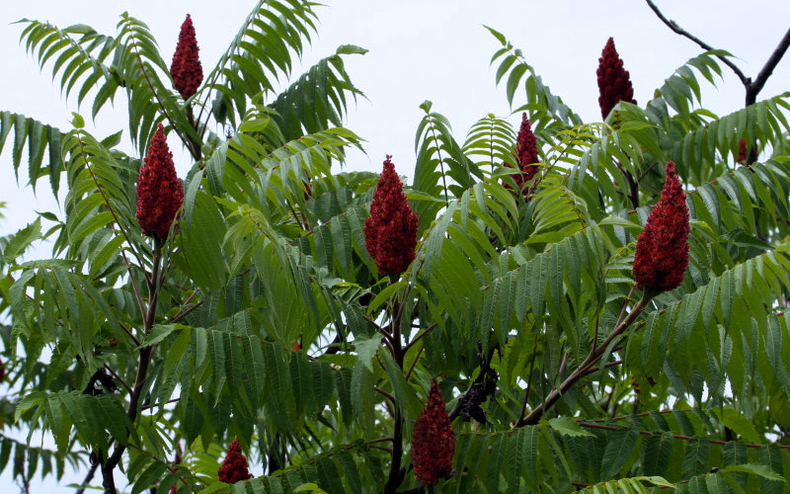
This is wild sumac, staghorn sumac (Rhus typhina) to be specific, named for the way its young twigs are covered in fuzz like a stag's incipient antlers. (I wrote about another type, dwarf sumac, after a visit to Cape Cod last summer; see that post on Gardenista, here.) It's often found growing tall at the edges of fields and roads, even along major highways, its swayed branches drooping fringe-like leaves. If you're planning to harvest, always venture far from trafficked areas. Whatever you're going to eat should be taken from pristine areas. Be mindful of both the soil and the air.
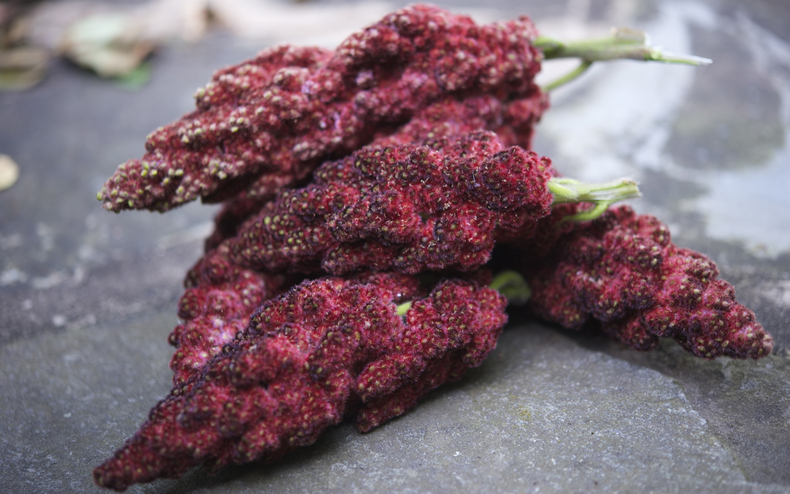
The fruit of the sumac, more accurately known as drupes, are pointed and erect, turning a rich burgundy when fully ripe. Covered with malic acid, the same compound that makes grapes and apples tart, these clusters of tiny berries have a citric taste. They are fuzzy and inedible, but can be soaked in water to make a bright, lemony beverage that has been dubbed "Indian Lemonade." Sumac was important to the Native Americans, who also mixed the leaves and berries with tobacco for a flavorful smoke.
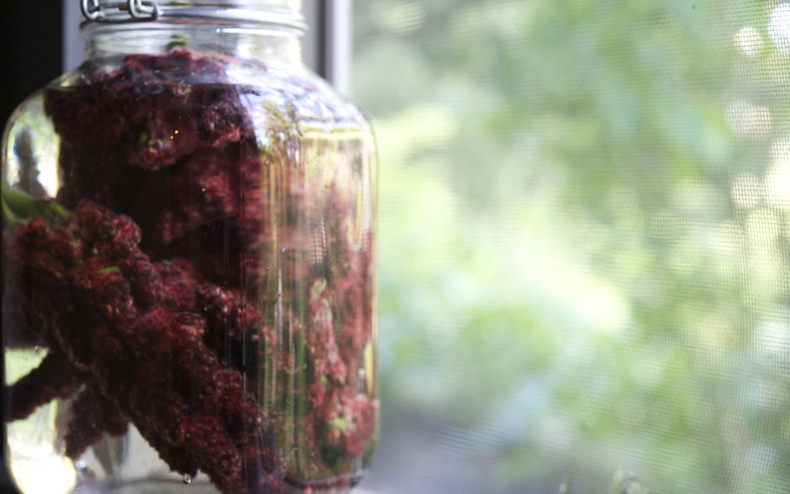
To make your own "sumac-ade" or "rhus juice," submerge cones in room temperature water. Don't boil or use hot water as this will extract the plant's bitter tannins. An ancient medicinal, sumac is a proven antimicrobial and can be used to treat a sore throat. As you can tell from its color, it is also rich in antioxidants and contains loads of vitamin C. Euell Gibbons recommended using sumac-ade instead of plain water to boil elderberry and other fruits that need a touch of tartness to liven them up when making jam or jelly.
Take care to harvest sumac before the malic acid has been washed off by rain. In Sullivan County, they tend to be at their peak of ripeness in mid-to-late summer. Just touch them and lick your finger; the sour flavor is readily apparent. You can always collect the fruit and dry it, carefully preserving it wrapped in parchment for later use.

Steep the sumac for a few hours or up to overnight, tasting until it achieves the flavor you like. Some people add honey or maple syrup to offset the tartness, but I enjoy it plain, over ice, with perhaps a sprig of mint or lemon verbena. (I also used it in a cocktail I crafted for a holiday event with Best Made and Warby Parker.)
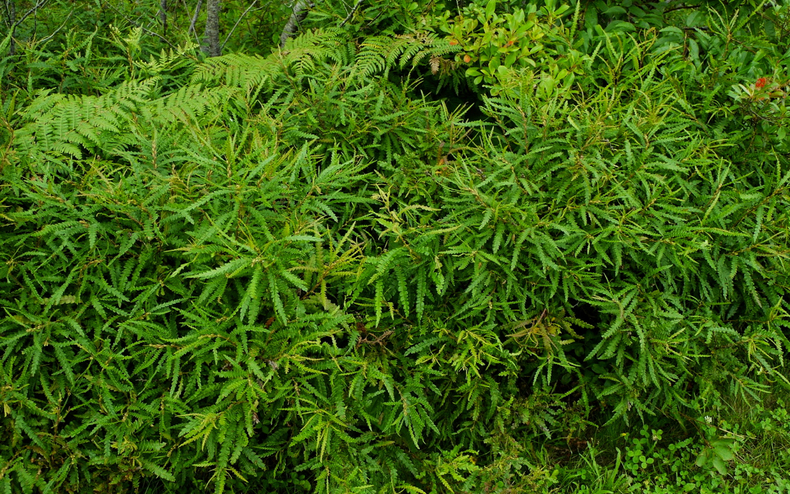
Another readily available ingredient is the wonderfully aromatic sweetfern (Comptonia peregrina), not actually in the fern family. Like sumac, it can often be found at the edges of sand pits and in rocky outcrops. It flourishes in these marginal places because it has teamed up with bacteria that turn atmospheric nitrogen into a form that the plant can use.
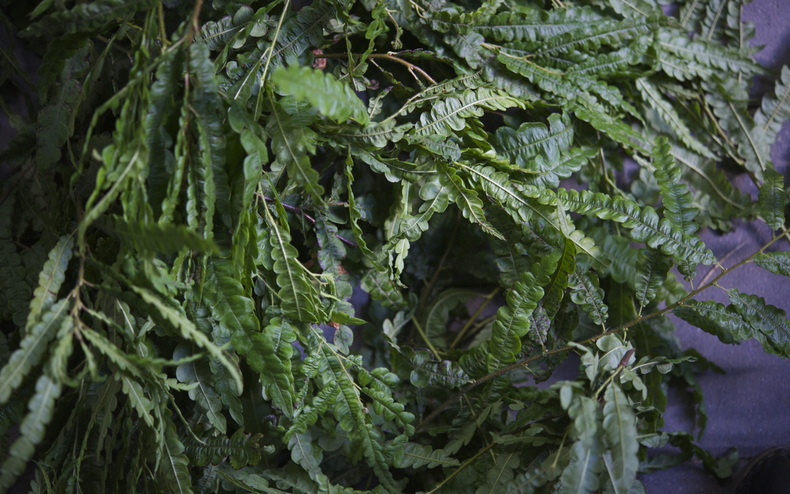
Crush it in your hand and it releases an aroma that is part incense and part grassy sweetness. On hot days, this delicious fragrance wafts toward you from a distance. Dry sweetfern for tea or use it as a spice. (Marie at 66 Square Feet uses part of the plant to infuse bourbon, and I've also enjoyed her sweetfern-spiced chicken liver mousse.)

I like to capture sweetfern's divine flavor in a simple syrup. Just steep a large handful of the leaves in the hot syrup until it cools, then chill. Combine this with sparkling water, or with herbaceous bison grass vodka plus a little lime juice, for a delicious drink. You'll go wild for it.
Indian Lemonade
- — Fresh mint or lemon verbena
- — Honey or maple syrup, optional
- — 6-8 ripe staghorn sumac cones
Stuff sumac cones into a large pitcher or glass jar and pour in 1/2 gallon of room temperature spring water. Crush the sumac a bit with your hands. Leave to infuse for several hours, up to overnight, tasting occasionally until you get the level of sourness you like. Chill and enjoy cold. You can add honey or maple syrup if you like. Garnish with mint or lemon verbena.
 Download Recipe
Download Recipe






4 Comments